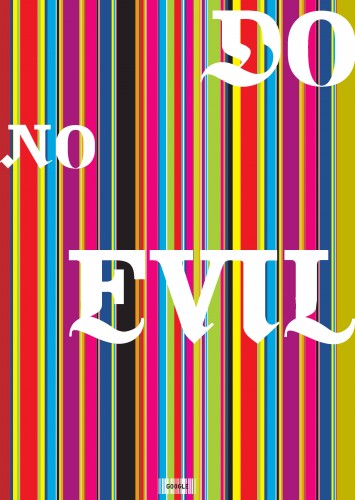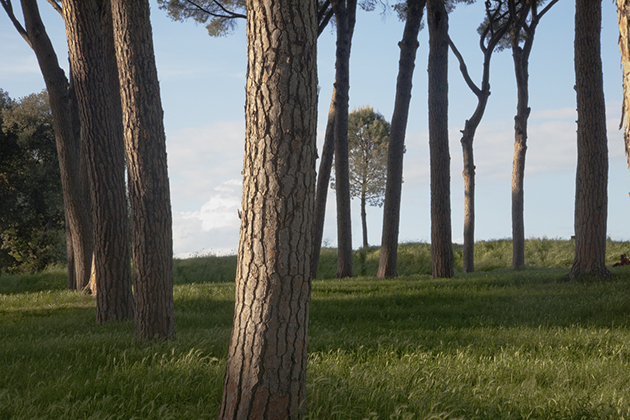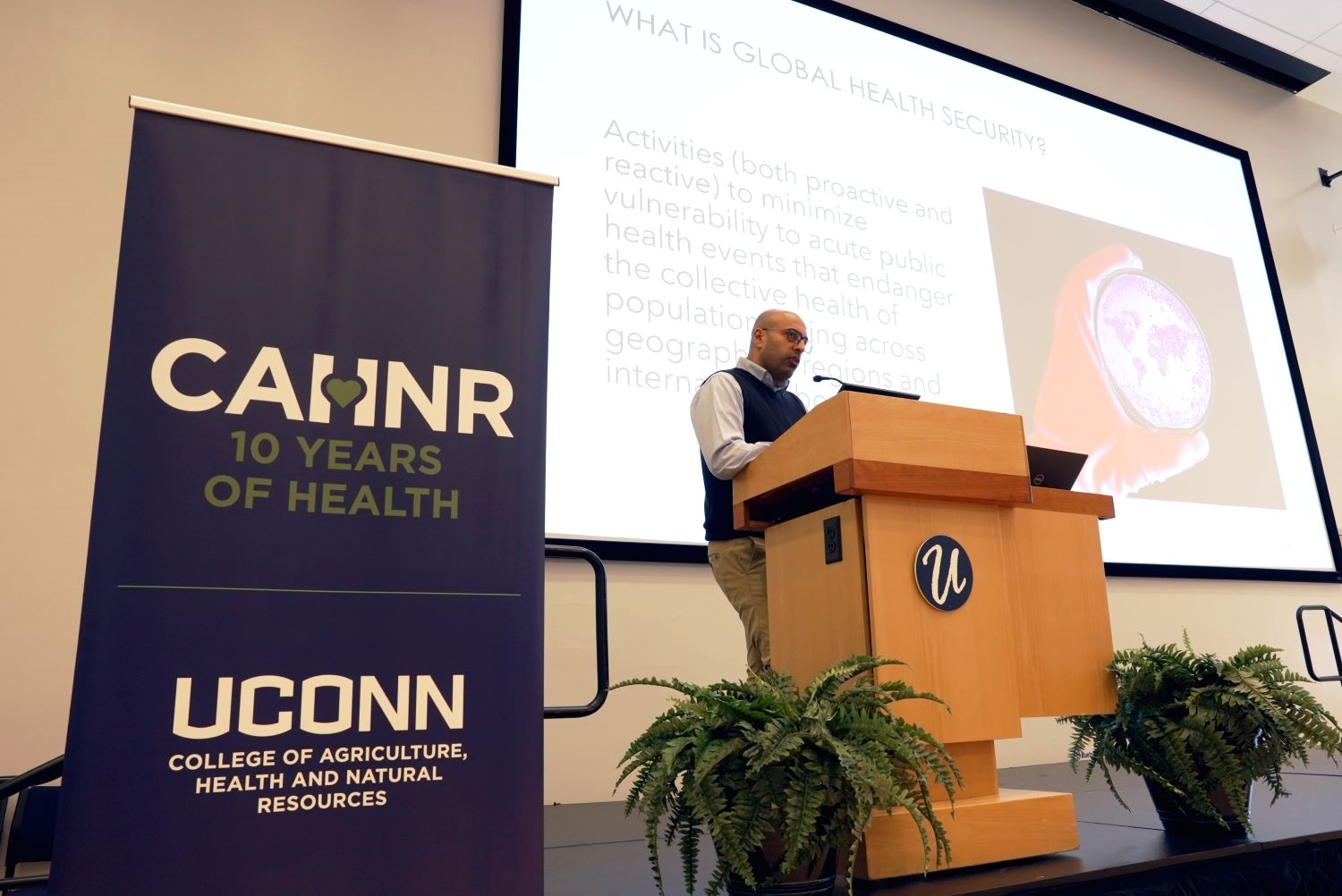When faculty return from a sabbatical, their research and writing during their time away from campus may still require additional work before it can be available to other scholars in their field or to the public at large. But when faculty in the Department of Art and Art History return to Storrs, their creative activity while on sabbatical can be seen each fall as part of the Faculty Exhibition at the William Benton Museum of Art.
I hope to bring to my students that sense of discovery, possibility, of wonder, the contradictions of seeing and how interesting they can be. — Charles Hagen
The works of Edvin Yegir, professor of communication design, and Charles Hagen, associate professor of photography, are featured in the 48th Annual Faculty Exhibition, which continues in the Benton’s main gallery through Oct. 12. There are also a variety of media – including painting, sculpture, illustration, and printmaking and installation art – from their colleagues in the department, representing significant directions in contemporary art.
Yegir and Hagen each have a distinctive view of the world through their art. Yegir has worked with corporations and cultural organizations helping them to communicate their ideas and products visually, and is director of the Design Center Studio, where students work on design projects for various University offices. Hagen has exhibited his images at museums, galleries and art schools in New York, Philadelphia, Connecticut, Canada, and Australia; taught and curated exhibitions throughout the United States; and served as an art critic for The New York Times and a variety of arts publications.
Visual communication

Yegir, who also works with national and international clients through his design consultancy: Typoptopia / Bureau for Visual Communication, says that while some define graphic design as visualizing ideas, “ultimately it’s about visual communication, mediating ideas, brands, and messages in an intelligent and informed manner in any given medium.”
A specialist in type design who collects and designs typefaces, Yegir says he continually works on a series of design experiments. For the past year he has focused on taking some of the most recognizable company slogans and re-contextualizing them on a background that is the ubiquitous symbol of the digital age – a multicolored bar code. Of the nearly 300 slogans he has typographically deconstructed, he selected 50 that run on a video projection in the exhibit.
“The main idea was to mostly use experimental typefaces that you would rarely see in the field associated with corporate branding,” he says. “Sometimes, even though the messages are self-contained, secondary messages form, depending on the sequence of words that precede and follow.”
Among the familiar slogans: “Have it your way” from Burger King, “We deliver for you” from the U.S. Postal Service, “Think” from IBM, “Just do it” from Nike, and “Jump in” from Xbox.
“I am a typographic designer. I believe that the design of visual communication is highly reliant on typography, regardless of the medium in which it appears and functions,” Yegir says. “It is also the visualization of language itself. I have a tremendous interest in literature. Verbalization is the key to visualization.”
Optical phenomena
Hagen went to Rome during his sabbatical, where he was a visiting artist at the American Academy, and to India. He spent a month in each location traveling to various sites. Several of his images, which include one from an ongoing series of photos near his home in Brooklyn, N.Y., focus on reflections.
“I find reflections fascinating,” he says. “Overall in my work I try to challenge what we think is reality. If you look at the world you imagine it’s one way, but if you look more closely you start to notice the edges, the loose threads and things that don’t quite fit. Reflections are a prime example of that and they’re linked to photography; they are an optical phenomenon that looks like exactly what it is, but has these other edges and other sides.”

The photographer says his process of discovering a subject he wants to capture as an image is not unlike the way something catches a person’s eye as they are walking around a location.
Hagen’s images in the exhibition include reflections of buildings on the hood of a parked car in Brooklyn, clothes drying on a bricked stairway along the Ganges River, the reflection of a boat along a river in Kerala, India, and the legs on a sculpture ruin in a park near Villa Doria Pamphilj in Rome.
“One thing I tell my students is that the picture you see at each stage of the process of making a photograph is different than what you saw a minute ago,” Hagen says. “You’re walking down the street and see something. It’s different than when you put your camera up to your eye and start to frame it. There is a series of misidentifications, almost, as you go through from the initial urge to make the picture.”
Hagen says he will bring the experiences of his sabbatical back to the classroom to his students: “This was a really interesting trip for me, looking at the world in different ways. I hope to bring to my students that sense of discovery, possibility, of wonder, the contradictions of seeing and how interesting they can be.”
The Faculty Exhibition continues at the William Benton Museum of Art through Oct. 12, along with “Victory is a Question of Stamina: Posters from the First World War.” For more information go to the Benton Museum website.



